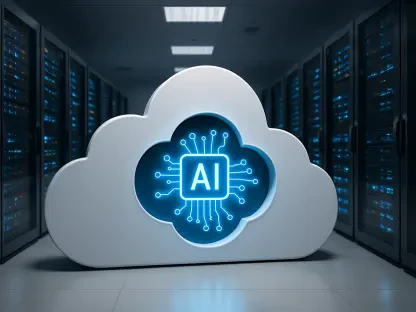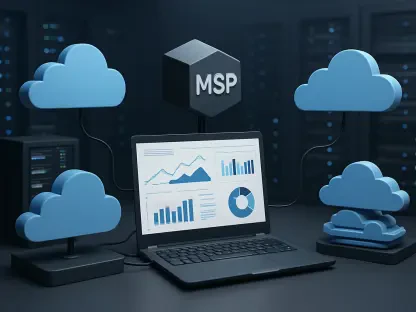Maryanne Baines, a recognized authority in Cloud technology, brings a wealth of knowledge to our discussion about integrating AI in healthcare. With extensive experience in evaluating various cloud providers, tech stacks, and product applications across industries, she offers unique insights into the collaboration between Highmark Health and Google Cloud. This partnership leverages AI to improve operational efficiency and patient care. Let’s delve into the pivotal aspects of this venture.
Can you explain how the partnership between Highmark Health and Google Cloud began and what the primary goals are?
The partnership between Highmark Health and Google Cloud began with a shared vision of using AI to modernize legacy systems and enhance patient care. The primary goal was to create a flexible, scalable AI infrastructure that could handle the complexities of the healthcare system without losing regulatory compliance or clinician trust. By focusing on AI as a foundational element rather than just a supplementary technology, both organizations aim to drive significant improvements in how healthcare is administered and experienced.
What role does platform engineering play in the integration of AI at Highmark Health?
Platform engineering is crucial in integrating AI at Highmark Health because it allows for AI to be embedded into workflows seamlessly. It’s about building a robust infrastructure that supports not only current but future needs, ensuring scalability and efficiency. Through agile platform engineering, they have managed to transform their operations and increase access to real-time insights, which is vital for a healthcare provider serving millions.
How does treating AI as a foundational shift, rather than just another tech layer, benefit Highmark’s operations?
Treating AI as a foundational shift changes the dynamics of its adoption and integration. This mindset ensures that AI isn’t just an add-on but a transformative tool that can redefine operational workflows. For Highmark, this means AI is strategically used to enhance every aspect of healthcare delivery, from claims processing to patient management, fostering a culture that prioritizes innovation and improvement.
What were some of the challenges Highmark faced in modernizing legacy systems using AI, especially with systems coded in COBOL?
Modernizing legacy systems like those coded in COBOL posed significant challenges due to their rigidity and outdated architecture. Highmark had to develop strategies to integrate these systems with modern AI solutions, enabling data flow and functionality without disrupting existing operations. This required not just technical expertise but also a strategic approach to system integration that minimized risks and supported seamless transitions.
How did Highmark manage to replicate up to 90% of its workloads without causing systemic disruption?
Achieving up to 90% workload replication without systemic disruption involved meticulous planning and execution. Highmark focused on building a flexible, cloud-based architecture that could adjust to AI enhancements without causing downtime or loss of functionality. This approach allowed for effective testing and gradual implementation, ensuring the existing systems continued to operate smoothly while the AI technologies were integrated.
Can you describe the range of use cases where Highmark’s employees regularly use generative AI tools?
Highmark’s employees use generative AI tools in various ways, such as creating personalized member communications and managing documentation for claims processing. These tools streamline administrative tasks by generating tailored outputs that can optimize patient interactions and improve operational efficiency. The AI also assists in data aggregation and verification, which supports accurate and quick decision-making.
How has Highmark ensured high adoption rates of these AI tools among its employees?
Highmark has ensured high adoption rates by investing in structured training programs, developing easy-to-use prompt libraries, and creating feedback loops that encourage active participation. By demonstrating how these tools simplify and enhance everyday tasks, and continuously refining them based on user input, Highmark promotes widespread adoption and integration of AI into their workflows.
Could you provide an example of how AI is used for credentialing and contract verification processes?
In credentialing and contract verification, AI is deployed to gather data from numerous sources automatically and cross-check it against required standards. This process, which was once manual and time-consuming, is now executed swiftly by AI, which compiles the necessary information and provides contextualized recommendations, thereby improving accuracy and efficiency in processing.
What is the agentic architecture approach, and how does it differ from traditional chat-based interactions?
The agentic architecture moves beyond simple chat interfaces to develop multi-agent systems capable of executing full tasks. Unlike traditional chat interactions that often need manual input and oversight, this approach allows systems to autonomously perform complex workflows, syncing various models for comprehensive task completion, thus increasing efficiency and reducing the need for multiple platforms.
How is Highmark piloting single-use agents for specific workflows?
Highmark is piloting single-use agents designed for particular workflows to streamline specific tasks within their system. These agents are programmed to handle defined functions autonomously, allowing for quicker and more accurate completion of specialized tasks by reducing the need for human intervention, ultimately enhancing overall workflow efficiency.
Why should enterprises begin with tasks instead of models when deploying AI solutions?
Starting with tasks rather than models ensures that AI deployment is purpose-driven. By focusing on the specific outcomes they want to achieve, enterprises can select the most appropriate tools to fulfill these goals. This task-centric approach prevents resource wastage on unnecessary features and facilitates more effective and efficient AI integration aligned with business objectives.
How does Highmark decide which models, like Gemini 2.5 Pro or Gemini Flash, to use for various tasks?
Highmark evaluates the nature and demands of each task to determine the most suitable AI model. For extensive research queries, models like Gemini 2.5 Pro offer depth, while Gemini Flash suits fast, real-time interactions. The decision is based on a combination of task requirements, model accuracy, and integration ease with existing systems, ensuring optimal performance and relevance.
Can you explain how Highmark’s business processes influence their selection and orchestration of AI models?
Highmark’s business processes dictate the selection and orchestration of AI models by centering on task fulfillment. By understanding their operational needs and data flow intricacies, they choose models that enhance existing systems and address specific business challenges, ensuring that AI solutions are cohesive with their strategic goals and operational frameworks.
What are the benefits of investing in data readiness and system integration early, even if full AI deployment is years away?
Investing in data readiness and system integration early sets a strong foundation for seamless AI deployment in the future. It allows organizations to refine data quality and streamline operations, making the adoption process smoother when AI technologies are introduced. This proactive approach mitigates integration challenges and accelerates AI effectiveness upon deployment.
Why is it not advisable for most businesses to build their own foundational AI models?
Most businesses find it prohibitive to build their own foundational AI models due to the significant resources and expertise required. Instead, leveraging existing models allows businesses to focus on fine-tuning and applying AI to specific use cases, maximizing efficiency and reducing costs while still achieving high performance and scalability.
How does adopting a platform mindset aid in AI experimentation and governance?
A platform mindset promotes a centralized approach to managing AI, facilitating consistent experimentation and governance. This mindset supports structured access to models and centralized tracking of their use, helping businesses maintain control over AI deployment, ensuring regulatory compliance, and optimizing the balance between innovation and oversight.
What strategy does Highmark use to measure and enhance internal adoption of AI tools?
Highmark employs a strategy of continuous feedback and demonstration of practical outcomes to measure and enhance AI tool adoption. By tracking usage metrics, sharing success stories, and engaging in regular updates with employees, they keep the workforce informed and motivated to utilize these tools, fostering a culture of innovation and continuous improvement.
Can you elaborate on the importance of designing AI systems for task execution rather than just providing static insights?
Designing AI systems for task execution ensures they actively contribute to business objectives by driving action and tangible outcomes. Instead of merely providing static insights, AI systems crafted for task execution can automate processes and deliver real-world benefits, such as increased efficiency and productivity, making the technology truly valuable to the organization.
Looking ahead, how do you see the partnership with Google Cloud evolving in the near future?
As the collaboration with Google Cloud evolves, we expect further advancements in AI applications tailored to healthcare’s specific challenges. This partnership aims to address even more complex issues with innovative solutions, potentially setting new standards in healthcare delivery and showcasing how technology can be harnessed for substantial operational and clinical enhancement.









